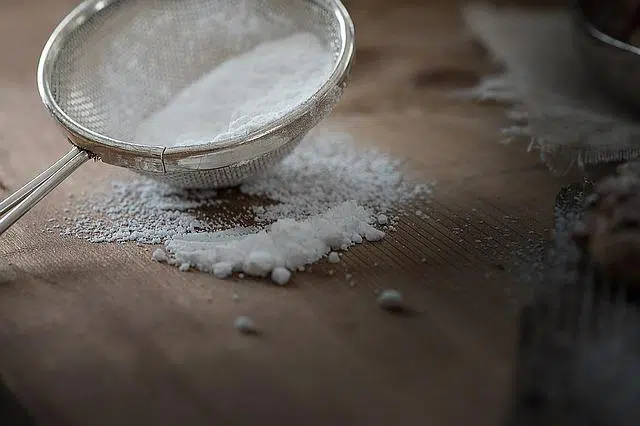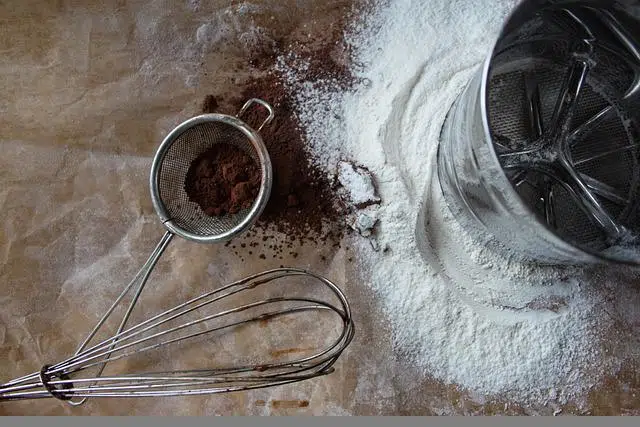
Sifting consists of separating the finest particles from those of greater thickness.
The term " sifter" is used as a synonym for "cerner" , which in turn has several meanings. Both terms can be used to refer to the action of separating dust from the coarsest particles of a material.
For sifting, it is common to use a strainer , a sieve , a cloth or another element with similar characteristics. The objective is to retain the larger parts and the smaller parts fall into a container placed below, thus achieving the desired separation.
Sifting in the kitchen
The process of sifting is often linked to culinary preparations. Many recipes , for example, require sifting flour .
It is common for flour to be flattened or compressed, as it is pressed to facilitate storage and transport. This can cause lumps to appear. This is why flour is usually sifted before using it in different preparations.
Sifting the flour also helps to remove any residue and, if necessary, helps to mix it with other dry ingredients (such as salt). This is, as you can see, an important step.
How to Sift Dry Ingredients
As we mentioned above, one of the benefits of sifting flour is that it eliminates the lumps that form when it compacts. Thanks to this, we can make fluffier and better-looking doughs . To sift flour, sugar, salt, cornstarch or cocoa, for example, in a homogeneous way, we must do the following:
* place the ingredient in a sieve or strainer;
* use a spoon to move it slowly, or tap it lightly with your hand, so that the grains pass through the small gaps in the instrument used and fall onto the preparation.
Before we begin, we must make sure that we use the correct amount for the recipe, something that is not always so easy when we sift the ingredients. If we are told to use two cups, we must measure them after straining , since its volume changes after this step. This is important, since an error of just a few grams is enough to alter the result negatively.
If we use a product of excellent quality and recently made, it is not always necessary to sift it, especially if the recipe is simple and does not require many ingredients. In the specific case of flour, sifting it can make it more difficult to detect problems in the mixture , which is why it is advisable to pay more attention to the dough before baking it.
Benefits of sifting flour
Both the consistency and texture of a dough made with previously sifted flour are much better. The ingredients are mixed more effectively and the result is fluffy and more pleasant to the palate.
The increase in air molecules that sifting the flour causes also results in the dough rising more. Another benefit is purity, as small insects or other foreign agents often sneak into the packages.

The action of sifting is common when cooking.
A danger or scourge
The concept of cernir can also be used to name a scourge or a danger that is close to something or someone.
“Many fear that the shadow of drug trafficking will once again loom over the city with the release of the famous criminal”, “The epidemic began to spread to other Asian countries and, according to specialists, it could become a pandemic” y “The visiting team's goal in the first minute of play raised some doubts, but the Spanish coach's team quickly managed to turn the result around and reached half-time with a comfortable lead” son expresiones que muestran este uso.
